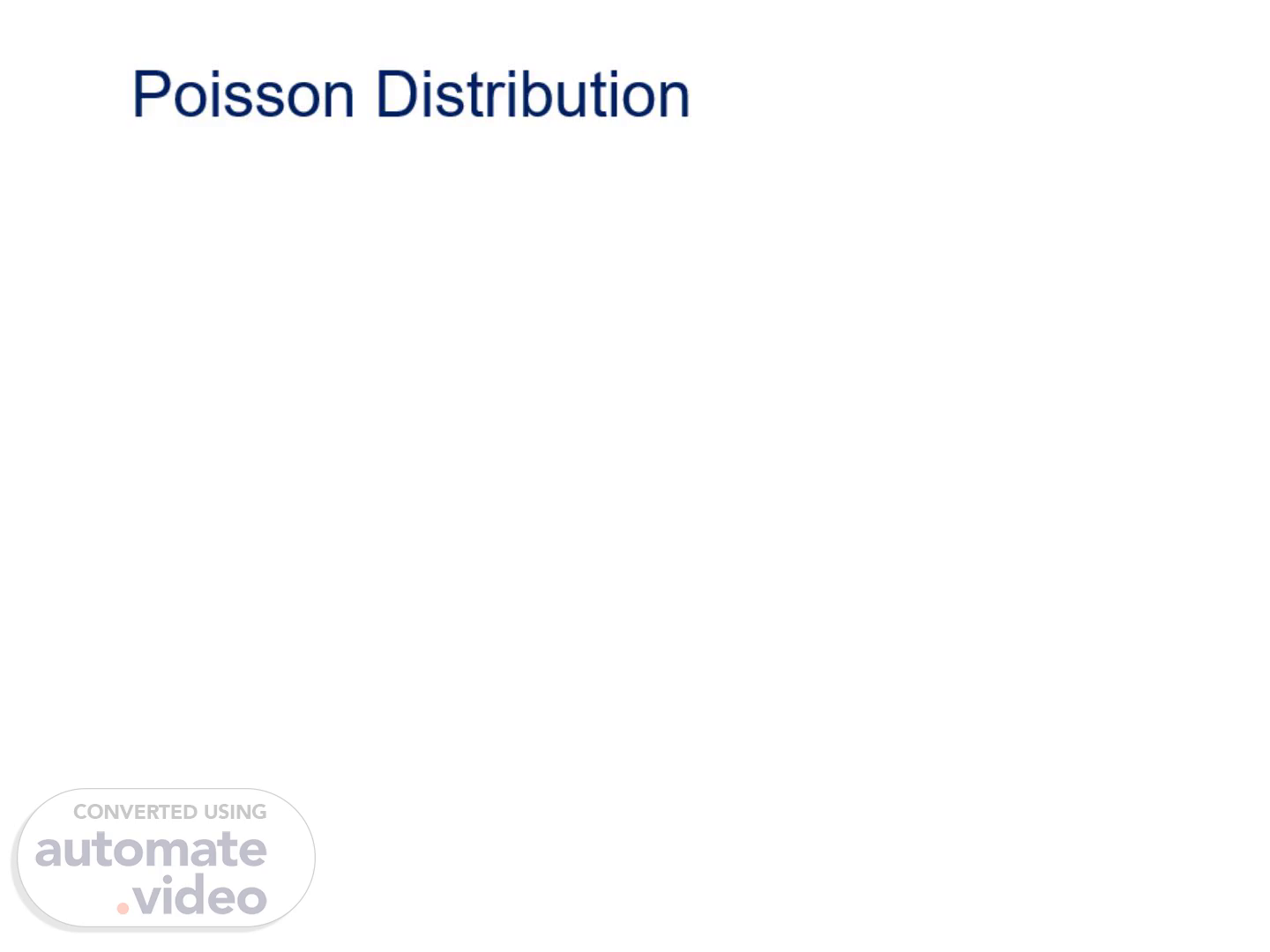Scene 1 (0s)
[Audio] Today, we will study the Poisson distribution. In the last few sessions, we studied probability distributions, both continuous and discrete. We studied normal distribution in detail. Normal distribution is a continuous distribution. We have also studied the binomial distribution, which is a discrete distribution. Today, we will study the Poisson distribution, which is a discrete distribution. It is a discrete distribution related to probabilities of events which are extremely rare, but we have a large number of independent opportunities for their occurrence. For example, the number of accidents occurring at a particular place in a city. This distribution can be derived as a limiting case of the binomial distribution by making “n” very large and “p” very small, and “np” is fixed (say, lambda). The probability of success in a binomial distribution is given as “n choose x p raised to x q raised to (n x)..
Scene 2 (1m 38s)
[Audio] In this slide, we will see the derivation of the Poisson distribution as a limiting case of the binomial distribution. Expanding the expression “n choose x”, we get “n times (n minus 1) times (n minus 2) times up to (n minus (x-1)) divided by x factorial as shown here. On examining the expression we can see that there are x times “np”s . We can take out the “np” raised to x as shown here. As n tends to infinity and p tends to zero, np tends to lambda. Substituting for np and applying the limit, we get the expression here. We can see that q raised to (n minus x) is q raised to n divided by q raised to x substituting for (1-p) for q as (q plus p) = 1 we get the expression here. When the limit is applied to the numerator, we get "e" raised to lambda. The denominator reduces to one. We will show these results in the next slide..
Scene 3 (5m 56s)
Thanks. 3.
